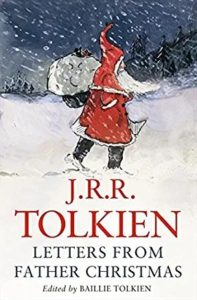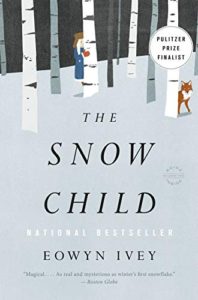Search results
49 results found.
 MarkFord.net
MarkFord.net
The open-for-inspection half-way home for my writing…
49 results found.
Julie Nolke is a Canadian comedian, actress, writer, and YouTuber. I discovered her online while searching for comic relief during the COVID lockdown She is very talented, as you can see from this clip of her audition tape for SNL…
“Happy is the man who finds a true friend, and far happier is he who finds that true friend in his wife.” – Franz Schubert
The Truth About Kale

For the first 60 years of my life, I knew nothing about kale. I had never even encountered the word. Then… there it was. On every restaurant menu and on every foodie’s lips. Not only were all my posh friends ordering it, they were raving about how great it was. Healthy and delicious, they said.
I was not interested. Kale is, first of all, dark green in color, which is a reliable indicator of bitterness. It is flat and dry and wrinkled, which is visually repulsive. Even the aroma is off-putting. I was eventually persuaded to try it. And guess what? It was even worse than I’d feared!
Why, then, are my friends still recommending it? I can think of only one answer to that. They are lying. They don’t like it, but they think they should. Much like, in our early teens, my peers and I would pretend to like the taste of beer.
Frankly, I don’t think humans were made to eat kale. And now, finally, I have some proof. Take a look here.
Nah. Let’s take a taxi…
When in the Big Apple, K prefers the subway to vehicular transportation. I don’t get it. The subways are dirty and crowded. But I comply. Next time we are there, I’m going to remind her that there is yet another reason to call an Uber: the crazy amount of violence occurring in NYC’s underground stations. It seems like every week now I’m looking at a YouTube video of some crazy beating up someone on the platform. The victim is usually a woman, and an older one at that. The beating goes on while other subway riders look the other way.
Now these nutcases have raised the ante. Beatdowns are passé. The new thing is pushing people onto the tracks. So far this year, there have been 25 such incidents, including two that were fatal.
In the clip below, you can see a particularly appalling attack of this kind: a full-grown man being body-slammed into the tracks.
Here’s Katy Perry singing “One of the Boys,” a song that was not inspired by the book I reviewed above (and, as far as I can tell, has nothing to do with any of the book’s themes). It’s about something that might be considered impolitic today. It’s about a tomboy, who, as she moves into puberty, realizes that she really is a girl after all.
Here Today; Gone Tomorrow
A Lesson From the Demise of Juul

When you are part of a fast-growing business in a fast-growing industry, it’s easy to imagine that growth is normal and that the good things that come from growth are going to keep on keeping on. But as I’ve discovered many times in my career, it ain’t always so.
In fact, it’s common for fast-growing start-ups to hit a point where sales level out. Or start to fall. There are many reasons why that happens. Four of them can be lethal.
From the inside:
* Insufficient capitalization.
* An inability to discover the optimal selling strategy before the clock runs out.
From the outside:
* An economic downturn in the industry.
* An unanticipated act of government over-regulation.
This last one is what happened to Juul, a pioneer in the e-cig industry that got big fast by promoting its e-cigs to minors by producing them in flavors like mango and crème brûlée. By 2018, the company was dominating the market. Altria (Marlboro’s parent company) bought 35% of Juul for $12.8 billion, giving the business a total valuation of $38 billion.
When the media began reporting on how popular Juul’s products were in middle schools, the FDA took action, and in June banned the company from advertising in the US. Altria’s $12.8 billion investment has since crashed by 97%.
Click here.
Uber’s Latest Feature: Is It Good for the Customer Experience?

When dealing with issues in business, you’re always looking for ways to increase productivity by simplifying routines and incentivizing employees to accomplish more in the time they have.
Uber recently introduced a feature that may simplify decisions for its drivers and motivate them. But it may also reduce the quality of the customer experience. I’m talking about the new technology that shows Uber drivers the customer’s destination and what they will earn from the trip before they accept the ride. The company claims this will result in fewer cancelled trips for riders. Yes, it will reduce those annoying, last-minute cancellations. But it will also – almost certainly – mean that if you want an Uber for a short ride, perhaps anything less than 30 minutes, you may have to wait a long time to get one.
Click here.
The Numbers Are Pretty Clear

We are in a bear market. The questions, for investors and retirees on a fixed income: How bad is it? And how long will it last?
Three facts from Bonner Private Research:
* The average bear market on the S&P 500 lasts 13.7 months and ends with losses of around 38%. That’s based on data from the eight bear markets since 1973. (A bear market being defined as a decline of more than 20% from the high.)
* The 1973 bear market lasted 21 months and resulted in a peak-to-trough decline of 48%. It took 69 months to make new highs. The dot.com bear lasted 31 months, saw a 49% peak-to-trough decline, and took 31 months to make new highs. The 2007 crash lasted 17 months, resulted in a 57% decline, and took 40 months to recover from.
* This bear market, so far, has lasted six months and resulted in a decline of around 20%.
After enduring the pandemic, ride-share companies like Uber and Lyft are now facing high inflation, driver shortages, and dwindling passenger numbers. According to a new report, the average fare is at an all-time high. And collectively, the companies had 20% fewer riders and 35% fewer trips in Q1 compared to Q1 2019. Click here.
New data shows home prices jumped 20% year-over-year in March. The rise marks the highest jump in the S&P CoreLogic Case-Shiller Home Price Index in its 35 years of data collection. Click here.
The Biden administration’s proposed tax holiday for gas is dumb for so many reasons. First, because it could only, at best, make a 2% difference of 15 cents. But also because this type of tax – a use tax – is one of the few that actually helps keep prices low. Click here.
Common Sense Prevails…
In Sports: After smashing national records and winning the NCAA championship, transgender swimmer Lia Thomas announced that she was hoping to compete in the Olympics. Maybe not, said FINA. On Sunday, the swimming world’s governing body announced a new rule disallowing trans females from competing in women’s events if they went through puberty as males. Trans men, however, will be free to compete against natural-born men without restrictions. Click here.
In Energy Production: Germany, a longtime European leader in the green energy world, is going to reopen shuttered coal plants as oil prices continue climbing. Click here.
10 Christmas Books
(from Esquire)
I am not afraid to say it: I like Christmas movies. I always have. Getting older hasn’t weakened that feeling.
Next week, I’m going to give you a list of great holiday films (many of which are good all year long). Today, I’m passing along a list of 10 great Christmas books recommended by Esquire magazine.

Letters From Father Christmas, by J.R.R. Tolkien
Beginning in 1920, every Christmas in the Tolkien household was marked by a very special delivery: a letter postmarked from the North Pole, written in Father Christmas’ spindly script, containing fantastical tales of everything from escaped reindeer to accident-prone polar bears. (You can guess that Tolkien, the master myth-maker himself, was the man behind the curtain.) This handsome keepsake anthologizes two decades of Tolkien’s letters, along with beautiful reproductions of his whimsical illustrations and handmade North Pole stamps. Share it with the little ones in your life, or enjoy it all on your own.

The Valancourt Book of Victorian Christmas Ghost Stories, edited by Tara Moore
Who says fireside stories should only be feelgood tales? During the holiday seasons of the Victorian era, periodicals often published ghost stories for chilling reading on cold winter nights. Thirteen of those tales are collected here – some by well-known authors, like Sir Arthur Conan Doyle and Elizabeth Gaskell, and others by anonymous or forgotten writers. Even the heaviest pile of blankets won’t stop the shivers from going up your spine.

P.S. Your Cat Is Dead, by James Kirkwood
In this biting cult classic, it’s Christmastime in New York City, and things couldn’t be going worse for Jimmy Zoole: his best friend is dead, his girlfriend is leaving him, he’s out of work, and the only person he can talk to is the burglar tied up in his kitchen. Oh, and his cat is dead, too. If it sounds grim, have no fear – this mordantly funny morality tale is like A Christmas Carol transported to the grimy New York of the seventies.

The Twelve Terrors of Christmas, by John Updike and Edward Gorey
This gimlet-eyed little tome brings together two extraordinary minds: Updike, one of the twentieth century’s greatest writers, and Gorey, the legendary gothic illustrator. Together they take the piss out of “the happiest time of year,” revealing the hidden dark side of familiar holiday tropes, like the tick-ridden reindeer flying the friendly skies. And what’s the big deal about Santa, anyway? “If he’s such a big shot, why is he drawing unemployment for eleven months of the year?” Updike asks. When holiday stress has you at your breaking point, turn to The Twelve Terrors of Christmas for a restorative dose of levity.

The Snow Child, by Eowyn Ivey
With some solid vacation time ahead of you, perhaps you’re just looking to get lost in an absorbing winter’s tale. We suggest The Snow Child, an imaginative debut novel rooted in a beloved Russian fairytale. In 1920s Alaska, where loneliness and despair cast a pall across the harsh frontier, a childless pioneer couple builds a child out of snow. The next morning, their snow child is gone, and in its place, an ethereal little girl has appeared. They come to love this surrogate child as their own daughter, but the mysteries of who she is and what she’s capable of loom large. Magical and mysterious, set in a spellbindingly beautiful and dangerous landscape, The Snow Child will seize your imagination and refuse to let go.

Christmas Days, by Jeanette Winterson
From the visionary writer of Oranges Are Not the Only Fruit and Written On the Body come a dozen imaginative Christmas tales, each one suffused with Winterson’s infectious enthusiasm for the season. From mysteries to romances to ghost stories, there’s a welcome blend of nearly everything here, all of it elevated by Winterson’s distinctive prose. Recipes and recollections link each of the stories, making for a deeply personal keepsake. Feel free to dive in and out at will, rather than read cover to cover – you’ll discover something new every year.

Little Women, by Louisa May Alcott
“Christmas won’t be Christmas without any presents,” opens Little Women, as Jo March grouses about being too poor to celebrate Christmas properly. You may not think of Alcott’s seminal classic about family, girlhood, and duty as a Christmas book, but trust us: bookended by poignant Christmas scenes, it’ll hit you right in the holiday feels. The March family’s provincial New England Christmases, lit by the lambent glow of nostalgia, remind us of the real reasons for the season: generosity, togetherness, and gratitude.

The Night Before Christmas, by Nikolai Gogol
The godfather of Russian literature delivers a folktale unlike anything you’ve likely read before; to this day, it’s still read aloud on Christmas Eve to Russian and Ukrainian children. Gogol unspools the tale of the humble blacksmith Vakula, who goes toe to toe with the devil in a battle for the heart of Oksana, his village’s most beautiful woman. When the devil steals the moon and unleashes a snowstorm on Vakula’s village, Vakula fights back, making for a transporting Old World fairytale about good and evil.

A Treasury of African American Christmas Stories, edited by Bettye Collier-Thomas
Anthologized from Black newspapers and periodicals published between 1880 and 1953, these enchanting Christmas tales are drawn from the Black literary tradition that flowered after the Civil War. Ranging from tragedies to comedies, fables to romances, these stories tackle powerful themes of love, spirituality, racial identity, and so much more. If you’re lured in by writers you know and love, like Langston Hughes and W.E.B. Du Bois, go ahead and get comfortable, because you’re bound to discover so many more.

Holidays on Ice, by David Sedaris
Does it get any better than this seminal volume of side-splitting holiday essays? In the iconic “Santaland Diaries,” David Sedaris remembers his years as Crumpet the Elf, a Macy’s department store elf who finds nothing to celebrate in Santaland. In “Let It Snow,” he bottles the exuberance of childhood snow days, all while weaving a hilarious story about getting locked out of the house during a blizzard. Holidays On Ice is a contemporary classic – and the best medicine for anyone who gets a little misty during this time of year.
What You Need to Know Right Now About the Metaverse
Part I: Timmy and the Metaverse
Timmy agreed to be homeschooled last year, but his parents couldn’t get the 15-year-old to do the work. As a punishment, his father pulled him from his baseball team. Timmy didn’t seem to care, so his father imposed additionalsanctions: No more outings with friends. His TV was removed from his bedroom. And his collection of vintage comic books was put in storage. Timmy didn’t object to any of this. But when his father tried to take away his cellphone, he refused to comply.
These days, Timmy spends virtually every waking hour on his cellphone. He’s out of school. He doesn’t play catch with his father anymore. His social life, such as it is, exists online.
Timmy’s father is worried. “His body is still here,” he says. “But his mind is somewhere else.”
It’s true. Timmy’s body remains in the physical universe, but his mind is no longer a citizen of the country he was born in, or even of the world at large. Timmy’s mind lives in the Metaverse.
In the Metaverse, Timmy can be an adventurer, a warrior, and a rock star – all on the same day. He can go to work as a stock broker, build and decorate his house, develop and profit from a farm, manage a professional sports team, even compete in mixed martial arts.
His Metaverse is not lonely. It is populated with fellow denizens – some avatars of his real-life friends, others beings of his own creation. He can play with them, fight with them, have sex with them, and kill them – all from the safety of his bedroom.
Everyone Is Doing It
For his 9th birthday party, Cathy Hackl’s son didn’t ask for favors for his friends or themed decorations. Instead, Ms. Hackl told Time magazine, he asked if they could hold the party on Roblox. On Roblox, a digital platform that allows users to play free games and generate new activities of their own, Hackl’s son and his friends would attend the party as their virtual avatars.
“They hung out and played and they went to other different games together,” she said. “Just because it happens in a virtual space doesn’t make it less real. It’s very real to my son.”
Everyone Is Talking About It
Several years ago, some of the investment analysts we publish began writing about a development in technology they called the Metaverse. As they described it then, it was going to be the future of virtual reality games. And it was going to be big. The clunky video games of the past were fast evolving to a point where the experience of such games would be indistinguishable from experiences in the physical world.
If you have paid any attention to these sorts of games recently, you know how prescient those analysts were. The animation is natural. The visuals are in 3 dimensions. The audio is lifelike. It is very easy to get lost in them.
And refinements are occurring at the speed of light. It feels like we are just a few years away from fully formed virtual experiences covering all five senses. It’s no longer just about video and audio. It’s about smell and touch and feeling.
Why Facebook Changed Its Name
I’m sure you’ve read that Facebook recently changed its name to Meta. In an amazing display of bravado, Mark Zuckerman and his team decided to make the change to overtly announce its vision of its future.
Facebook was an amazing business that grew into a behemoth of social media. As Zuckerman sees it – and I don’t doubt it – Meta will be more than that. Much, much more.
In explaining how they chose the new name, Zuckerman defined the Metaverse as a technology to “make everything in life – from business to entertainment and mostly to human communication – easier and more efficient.”
That’s one way of putting it. I’d put it differently.
The term was coined by Neal Stephenson in his 1992 sci-fi novel Snow Crash – a portmanteau of “meta” and “universe.” In the novel, humans use digital avatars of themselves to interact with each other in a three-dimensional virtual space (the Metaverse) that exists outside of the real world.
Thus, the Metaverse is a parallel universe that exists digitally for each individual that lives within it. It is Facebook and Instagram and Roblox put together. It is online chatting and texting, gambling, sports, research, education, book clubs, discussion groups, travel blogs, chat groups, online dating, and every other form of social interaction one can think of, including sex.
The Metaverse is the inclusion and synchronization of all of these into an interactive universe of digital communities, each of which is controlled by a pantheon of digital gods.
And Mark Zuckerberg is one of those gods.
Part II: The Metaverse as a Virtual Country
I think of the Metaverse as a federation of digital nation-states. But to simplify the metaphor, let’s consider just one Metaverse: the Metaverse of Meta, what Facebook is fast becoming.
As a digital nation-state, Facebook/Meta is far along in its development. In terms of population, it is already the largest nation in the world with 2.9 billion users. In terms of GDP, it’s nowhere near number one, but it’s not doing badly. With advertising revenues of $27.2 billion and total revenues of $86 billion, it is tiny compared to the US and China. But it is larger than 98 other countries, including Oman, Luxembourg, Croatia, Jordan, Belarus, and Iceland.
There is a reason that Facebook (and the other major digital nations, such as Apple, Alphabet, and Microsoft) are growing so fast.
From the citizen’s point of view, a country is a place where one lives. From the government’s point of view, a country is a place full of citizens that must be given certain products and services, and also taxed and controlled.
When I began thinking about it this way, one thing became shockingly clear. In all the important ways, digital countries are superior to real ones. They are better at doing what they must do and better at doing what they want to do.
They are better at providing the goods and services a government provides. They are better at taxing their citizens. And they are better at controlling them.
The primary purpose of a nation-state is to provide protection for its citizens in terms of their lives, liberties, and property. A secondary responsibility that many governments have taken on is to provide some form of happiness – or, at least, the right to the “pursuit of happiness.”
In all of these areas, the Metaverse is more comprehensive and more efficient than physical nation-states.
Let’s take a look at why I say this.
How Meta Is Meta?
In the Metaverse, you have not only the right to life, but to the life of your choosing. You can be a doctor, lawyer, farmer, or rock star. You can be six-foot-four or four-foot-six. You can change your race or your gender with the click of a button.
Plus, your right to life isn’t limited to a single life. You can rise from the dead. You can also live duplicate lives sequentially or simultaneously.
In the Metaverse, you have the right to acquire as many digital goods and services as you want. You can be rich. You can be famous. And perhaps most importantly, you can enjoy the love and admiration of everyone in your digital nation-state.
You can have all these things because, as a citizen of the Metaverse, you can design your own life experience.
If the Metaverse is better for its denizens, it is equally better for its governors.
What does a government want from its citizens? Two things, primarily. It wants obedience to its laws and regulations. And it wants the ability to tax them.
The Metaverse satisfies both of these needs well and efficiently.
Let’s look at taxes.
Taxation in the Metaverse
In the US and other nation-states, you have to pay income tax on the money you earn, property tax if you own a home, and – if Elizbeth Warren has her way – a wealth tax if you have wealth.
These taxes are mandatory.
In the Metaverse, the only tax you pay is a sales and usage tax on the products and services you buy in the Metaverse. Individual taxation, in other words, is voluntary. And for many experiences, such as games and gaming, you have options. You can pay with money or you can pay with time.
In either case, there is no way to avoid paying what you owe. Every transaction in the Metaverse is tracked and sent to the cloud and recorded on the blockchain.
Business and property taxes exist in the Metaverse, but they, too, are optional. As a citizen of MetaLand, you don’t have to have a business. Nor do you have to own property. But if you do, you pay a fee for that. That fee is also tracked and sent to the cloud and recorded on the blockchain.
In short, the taxation system of the Metaverse is superior to the tax system of the US (or any other nation-state) because it is both voluntary and impossible to evade. It is easy and unobjectionable for the private citizen and 100% efficient for the government.
Law and Order
In the physical universe, it is possible to reduce your taxes through myriad tax code loopholes (if you have the right lawyers and accountants). It is also possible to cheat on your taxes. But if you get caught, you are likely to end up in jail.
Likewise, in the physical universe, there’s the risk of punishment if you engage in any other kind of criminal activity – from cheating your customers to abusing your spouse to rape and murder.
In the physical universe, order is possible only when the government has the capacity to enforce its laws. And that enforcement is only possible with coercion. The threat of punishment (sometimes extreme punishment) for citizens that break the law is reasonably effective at deterring crime, but it is far from perfect. Not only does crime continue, the fact that the government allows itself to use physical force puts it always in danger of being overthrown.
But in the Metaverse, there is no need to resort to the threat of punishment to enforce the law.
The digital nation-state has no need to intervene in the physical lives of its citizens because it cares nothing about their physical lives. The only thing that matters to digital nation-states is the digital attention of its citizens. When they act improperly, they can be punished by temporary or permanent banishment. No guns. No breaking down doors. No bloodshed.
And 100% compliance.
In Summary
The digital nation-state is better than the physical nation-state both for the citizens and for the government. And because everything is or seems to be voluntary, the digital nation-state can exist without fear of rebellion or revolution.
The Metaverse is not a fantasy. Nor is it a prediction. It is already here, today. It is where Timmy, and Cathy Hackl’s son, and many of their friends live. It is where millions more people their age are living every day.
Whether in virtual reality (VR), augmented reality (AR), or simply on a screen, the promise of the Metaverse is to allow a greater overlap of our digital and physical lives in wealth, socialization, productivity, shopping, and entertainment.
These two worlds are already interwoven, no headset required. Think about the Uber app telling you via location data how far away the car is. Think about how Netflix gauges what you’ve watched before to make suggestions. Think about how the LiDAR scanner on newer iPhones can take a 3D scan of your surroundings. At its core, the Metaverse (also known to many as “web3”) is an evolution of our current internet.
“You’ve got your goggles on, 10 years from now, but they’re just a pair of sunglasses that happens to have the ability to bring you into the Metaverse experience,” says John Riccitiello, CEO of Unity Technologies, maker of a video game engine that is increasingly used to develop immersive experiences on other platforms. “You’re walking by a restaurant, you look at it, the menu pops up. What your friends have said about it pops up.”
Yes, you heard it here first. The Metaverse is here. And it’s here to stay. It is not a part of our world. It is its own separate world. And it’s a world that is, in most ways, preferable to be a part of. Metaverses like Meta or Apple or Google will eventually be richer and more powerful than nation-states. Zuckerman understands that. So do his fellow meta-gods. They are doing their best to keep us distracted by talking about customer experience. That’s not the goal. The goal is universal, voluntary domination.
I’ll have more fun thoughts – such as why the Metaverse will result in a drastic decrease in human population – in upcoming blog posts. Stay tuned!
BAD: Crazy Court Decision in Australia
A lot of weird stuff goes on in the land down under. Last week, I read that Australia’s highest court ruled that newspapers and television stations that post articles on Facebook can be sued for defamatory comments made by readers on such posts. Click here.
While you’re at it, read what I had to say about the legal ramifications of defamation here.
WORSE: We Killed… Who?
After 13 American soldiers and dozens of civilians were killed in Kabul on August 29, the US launched a drone strike that, according to the Biden administration, targeted the terrorist responsible for their deaths. But turns out that the “terrorist” wasn’t a terrorist at all. It was Zemari Ahmadi, a worker for a US aid group. To make matters worse, the strike on Ahmadi’s car also killed 9 members of his family, including 7 children, who were in the car at the time.
Click here.
PUZZLING: 2 Stories CNN Didn’t Cover
Let me break this down. A White woman, on camera, wearing a gorilla mask, yells racist slurs at a Black man running for office.
The incident was widely reported on Fox and other conservative media outlets, but barely mentioned elsewhere. Click here and here
Shapiro vehemently denies being a White Supremacist, pointing out that he has actually received death threats from White Supremacist groups. But according to an internal document created by Google’s diversity training team for Google employees, he is part of the “White Supremacy Pyramid” responsible for fomenting racial hatred in the US.
Click here to watch Shapiro’s response.
Google denies that the document has anything to do with policy. But you have to wonder…
HOPEFUL: The Kids May Be Alright
The state of racial divide today is worse than at any time in memory. Identity politics and Critical Race Theory, its imbecile bastard child, have set Blacks against Whites and Whites against Blacks as a matter of principle.
There are reasons that racial-based fear and animosity have seeped into our culture. But contrary to what some would have us believe, it is not natural.
This little video of two five-year-old friends reminds us that racism – towards any and every race – is a product of nurture, not nature.
3 Bits About Korea: A Crash Course in the Difference Between Political and Economic Freedom and Central Control
1.- In a recent issue of his blog, Bill Bonner wrote this:
Thank the long-suffering people of North Korea for their real-world/real-time test. The elite in North Korea has been telling them what to do for more than half a century… with predictable results – grinding poverty… and outright starvation.
And we are grateful. Otherwise, the theory – that the freer the society, the richer the people – would be just a theory… buttressed only by speculation, logic, and anecdotal evidence.
But the test on the Korean Peninsula was almost perfect. Same people. Same resources. Same climate. Same time (the test began in 1953). More or less the same starting position (the US had pulverized North Korea in the war; but so had it smashed up Japan and Germany).
The southerners chose freedom – moderated, as always, by government, social norms, and so forth.
The group in the North went for non-freedom… ruthlessly, sternly enforced by the Kim Il-Sung and then Kim Jong-Il communist governments.
The result? The South Korean economy is now nearly 100 times bigger than the economy of North Korea. The average South Korean has nearly 50 times more wealth.
He will live to an average age of 79, which is 11 years longer than the North Korean male (and a couple of years more than the average man in the US).
And to top it off, the free people of the South are between 1 and 3 inches taller than those in the North, thanks to getting enough to eat.
Conclusion: Freedom makes a big difference in the economic world.
2.- JS sent me this last week – an interview with Yeonmi Park, a North Korean defector. Click here for this firsthand account of the North Korean lifestyle.
3.- Book Recommendation: Long Road Home: Testimony of a North Korean Camp Survivor shares the remarkable story of Kim Yong, a former military official who spent six years in a gulag. Click here.
Unleash Your Inner Art Critic
Take a look at this list of Rembrandt’s greatest hits. The critics pick their faves. Mine’s “Herman Doomer.” What’s yours?
Click here.
Well Said: 4 Worthy Thoughts
* “Over the years, I’ve learned that the first idea you have is irrelevant. It’s just a catalyst for you to get started. Then you figure out what’s wrong with it and you go through phases of denial, panic, regret. And then you finally have a better idea and the second idea is always the important one.” – Jessica Livingston
* “Double down on your best relationship. It’s the investment with the highest return.” – James Clear
* “If my hands are fully occupied in holding on to something, I can neither give nor receive.” – Dorothee Sölle
* “The ability to forget a sorrow is childhood’s most enchanting feature.” – Phyllis McGinley